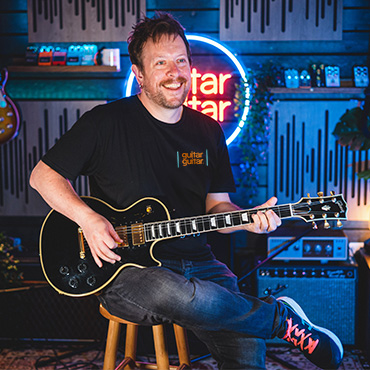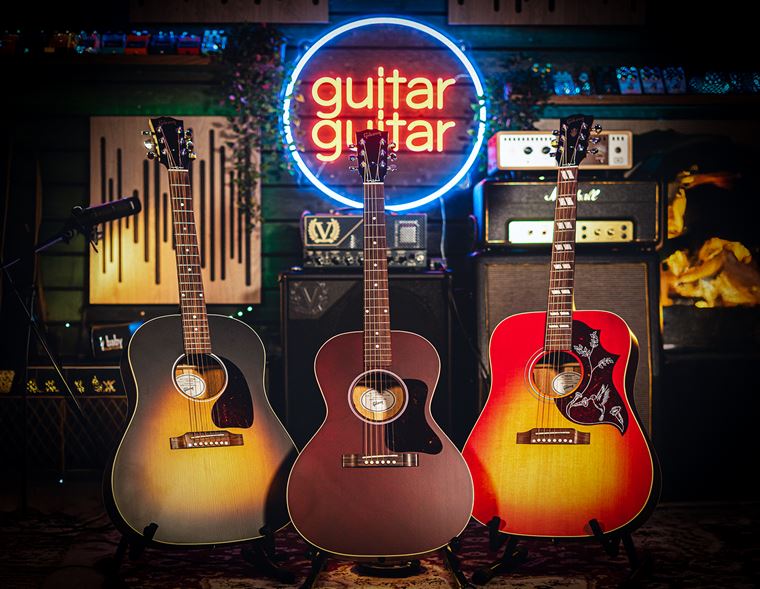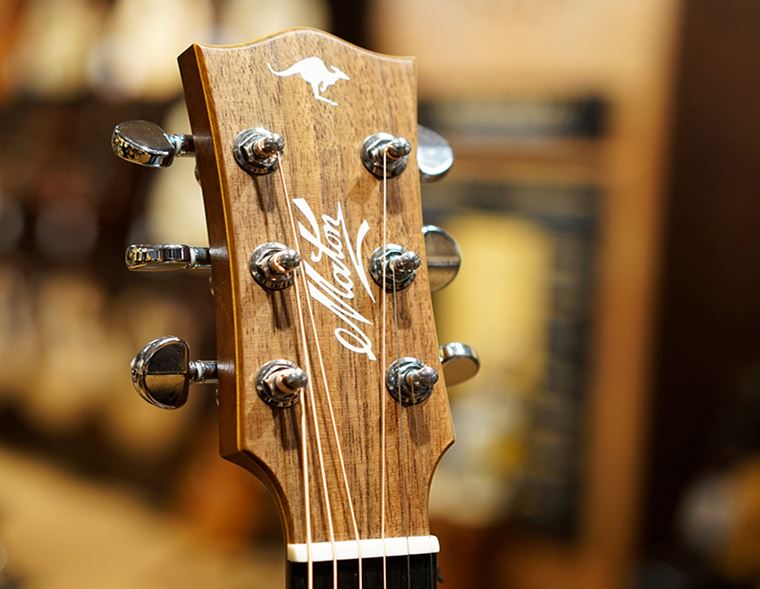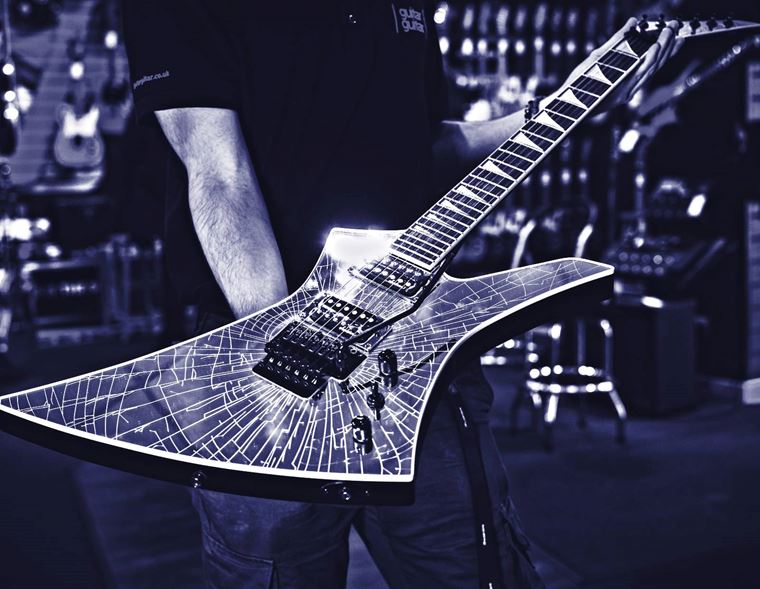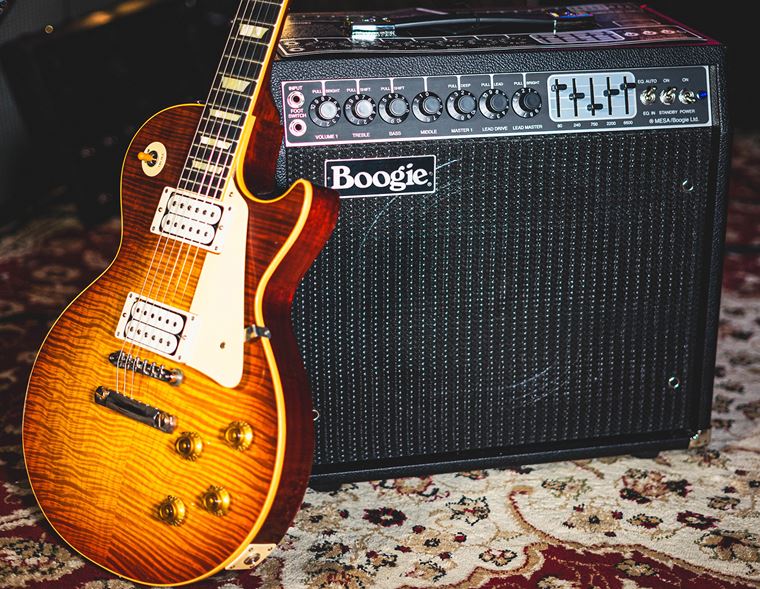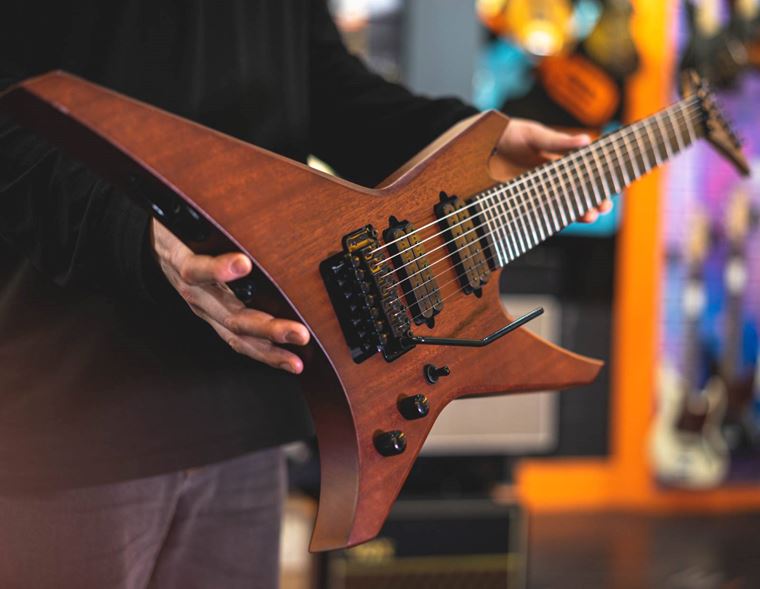7 Reasons Why You Need an EQ Pedal
Published on 22 April 2025
Guitarists of the world, hear me now! You need an EQ pedal.
If you don’t already have one in your arsenal, you are missing some serious tricks! Today, I want to share a few of those tricks with you. If you haven’t had much experience with an EQ pedal, you might be surprised at how useful (read: essential) they can be!
I hope to convince you of this today, because I want you to have full and complete power over your sound! By the end of this blog, my aim is for you to understand just how useful and flexible an EQ pedal is. Jobs you might delegate to other effects (compression and drive, normally) can often be handled better with EQ, so let’s dive in and see what it’s all about.
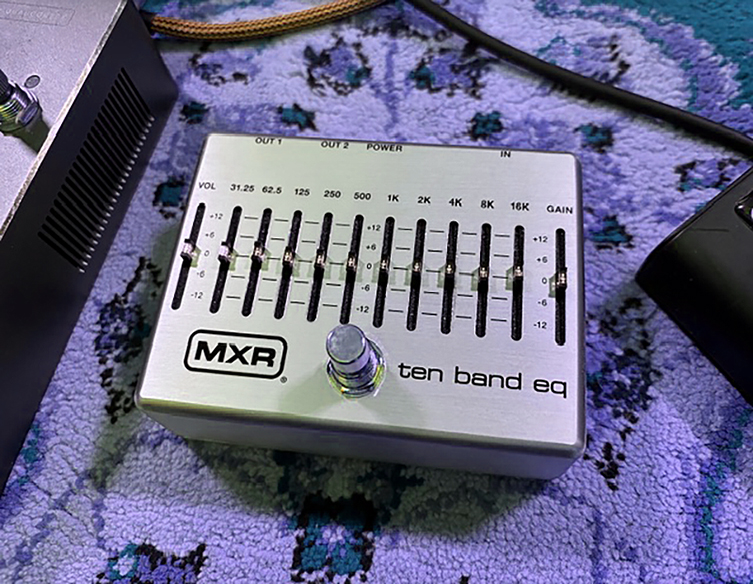
Contents
Where Does an EQ Sit in a Pedal Chain?
7 Reasons Why You Need an EQ Pedal
What is an EQ Pedal?
An EQ pedal is a device that takes your guitar signal and alters it via a set of ‘slider’ controls that can increase and decrease certain pre-determined frequencies. These frequencies can vary depending on brand and pedal model, but they will all affect parts of your guitar sound. It’s kind of like the Bass, middle and treble controls on your amplifier but more specific and far more powerful.
Each slider represents a specific audio frequency - say, 250Hz or 8KHz, for example - and the mid point of the slider will normally be zero. Zero means there will be no change to that frequency whether the pedal is switched on or not. Moving the slider upwards increases the loudness of that particular frequency band. Concurrently, moving the slider down lessens that frequency. We talk about ‘boosting’ and ‘cutting’ frequencies in this regard.
An EQ pedal allows you to shape your sound in many ways, and for a variety of situations. I’ll give you some good examples further into the blog!
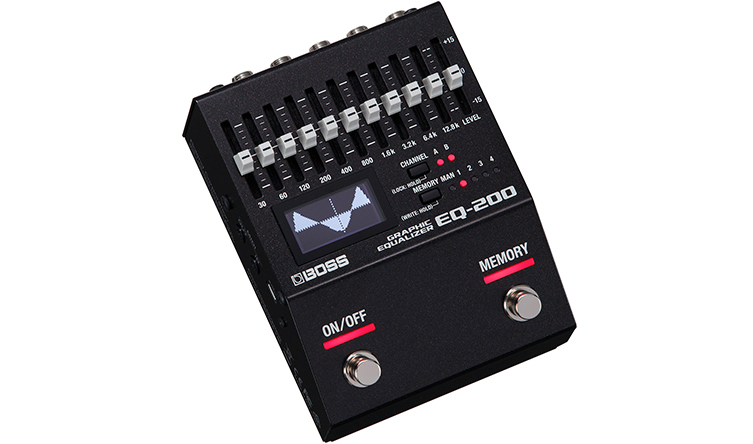
Where Does an EQ Sit in a Pedal Chain?
Like many guitar effects pedals, EQ pedals can be used in a variety of places within your pedal chain.
Mostly, I’d recommend having your EQ near the beginning of the pedal chain, before your drive/gain pedals. Putting it early in your chain will allow the pedal to control the fundamental sound of your guitar before it travels through subsequent effects.
That said, having an EQ pedal positioned after a bunch of pedals can help you tidy up your sound after it’s been processed by other effects. I recommend trying both ways and seeing what works for your setup, and indeed how it works when used in your amps effects loop, if it has one. This can be a useful ‘final tweak’ to your sound.
Personally, I like to have my EQ sitting early on in my chain. I like how much I can change my distorted tones by altering the EQ before my sound reaches the gain pedals.
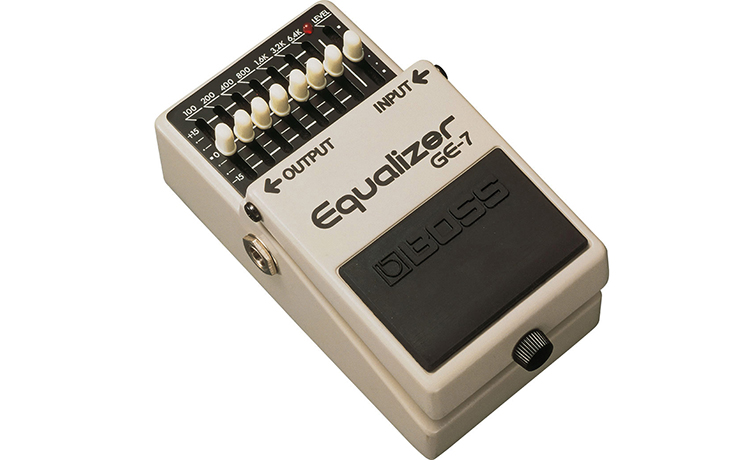
Frequency Ranges Explained
In the examples below, I’ll talk in certain terms. These terms might include ‘upper mids’ and ‘bottom end’. What does all of this mean? Let me be slightly more specific:
- Sub-bass : 20Hz to 60Hz: you feel this range more than hear it.
- Bass: 60Hz to 250Hz. Warmth or boomy/muddy sounds, depending on how you boost it.
- Lower Midrange: 250Hz to 500Hz. ‘Depth’ lives here, from brass to bass to lower vocals.
- Midrange (mids): around 500Hz and 2kHz. A powerful area to sculpt. Too much can lead to listener fatigue; too little and the sound is weak.
- Upper midrange: around 2kHz and 4kHz. Very important for guitar tones, speech, vocals. The human ear really likes 3.5kHz.
- Top-End Presence: 4kHz - 6kHz. Guitar harmonics here: vitality and articulation. This area can make a sound seem close or far away from you, depending on whether it is boosted or cut.
- Top-End Brilliance: 6kHz - 20kHz. More about harmonic overtones than fundamentals, this area creates space, air and a sort of ‘sheen of production’ when used well. Too much is nasty to listen to though!
Use this info when experimenting with your EQ pedal and it’ll help you understand how your settings will affect the tone.
Now, on to some practical tips!
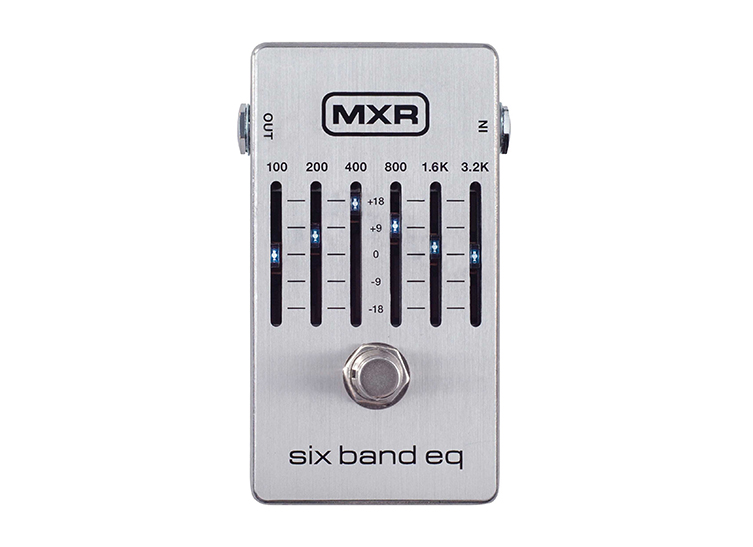
7 Reasons Why You Need an EQ Pedal
Ok, here are 7 specific ways in which your humble EQ pedal can powerfully assist you in getting the tones and behaviours from your guitar that you’ve always wanted!
For the pictures, I’ve chosen an MXR M108S Ten Band EQ (because it’s really good) but there are lots of EQ pedals out there, so have a look at what’s available. This MXR pedal also has gain and volume sliders, but I’m not using them in this guide since not all EQ pedals carry these features.
It’s also worth noting that from brand to brand, EQ pedals will focus on different frequencies. For example, some pedals will have a slider for 4kHz, and many others won’t. They’ll have 3.5kHz instead, so that might prove fine to use as a similar ‘close enough’ frequency.
Make sense?
Okay, here are the 7 reasons why you need an EQ pedal…
Solo Boost
- Everything up for a gentle lift
- Add some treble for bite
The most common use for an EQ pedal is as a solo boost. When it comes time to play a solo, you need more volume, and I’d also say you need a little more treble. I’d recommend boosting every frequency a little bit (push every slider an equal amount up) and then pushing the last couple on the right a little bit more.
Don’t go crazy here, you only need a slight increase to give your sound a lift.
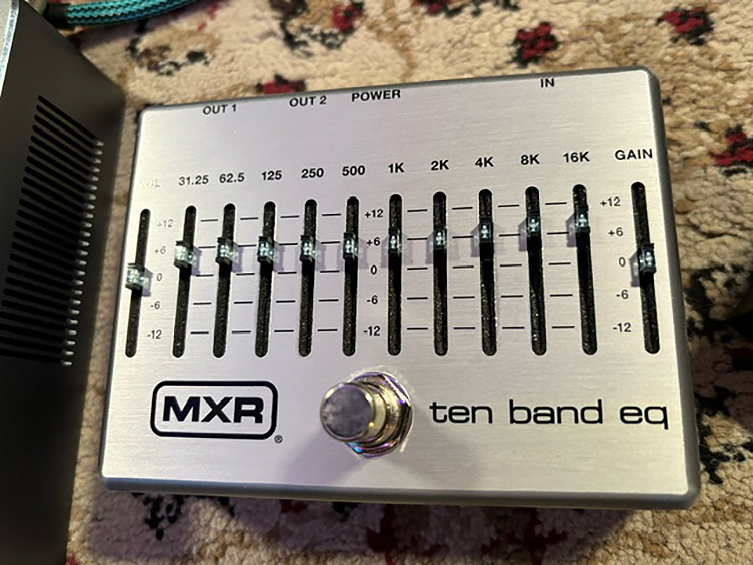
Mid Control for Punchy Tones
- Boost your upper mids
- Consider cutting some low end
If you dial in gorgeous guitar sounds at home and then find them vanishing/eaten up in rehearsals or at gigs, then read on. You are solely missing out on midrange frequencies, and in particular, upper mids.
If you want punchy rhythm tones, I suggest working up some of those upper mids, without going too far into ‘treble’ territory, which should be saved for your solos.
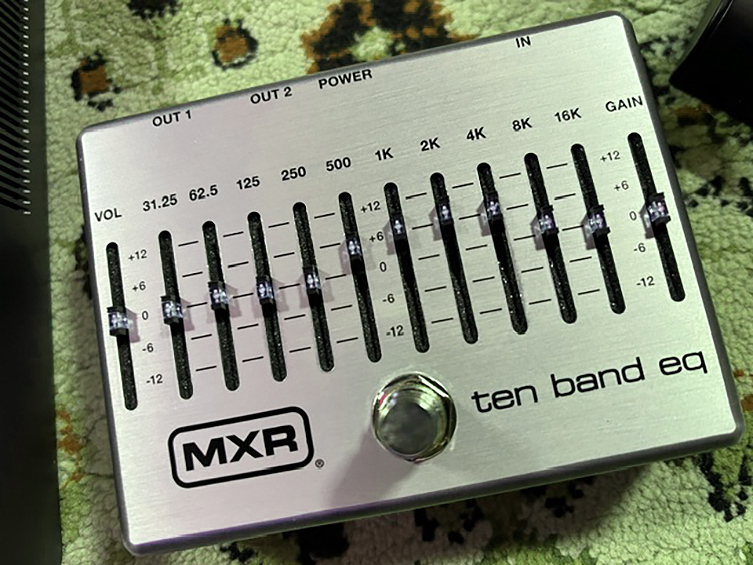
Also, as much as you might not want to, I recommend experimenting with chopping out some of your low end, too. The bass guitar will eat up most of these low frequencies anyway, so selectively cutting some low end from your guitar will tighten your low end.
Between that and the boosted upper mids, you’ll hopefully be closer to an excellent ‘crunchy’ rhythm guitar sound.
Rhythm/Lead Faux Channels - Working Backwards
- EQ on for your rhythm sound
- EQ off for your lead sound
This is kind of the opposite to the notion of a boost. It’s counterintuitive in a way - because you’re starting with your ‘end tone’ and working backwards, but it works really well if you are a traditional valve amp person.
It goes like this: dial up your biggest and best lead sound from your amp. Make it absolutely sing. Now, set your EQ pedal so that every band has a slight decrease - every slider down a little. What you’ll do is use your now-quieter EQ’d sound as your rhythm tone. When it comes time for a solo, simply switch OFF your EQ and let that full amp sound roar!
This is an easy way to achieve a quasi two-channel setup from a single channel amp.
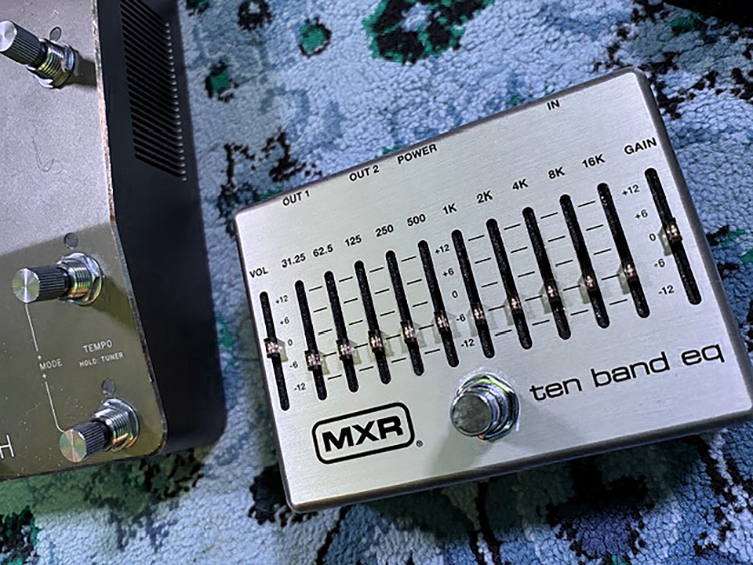
Balancing Guitars
- Add beef to skinny-sounding guitars
- Chop out some girth from fatter sounding guitars
Do you use more than one guitar with the same amp and effects setup? Many of us do, and oftentimes they can be pretty different sounding guitars, like a Stratocaster and a Les Paul, for instance.
Guitars can have wildly different outputs, not to mention tonal characteristics. Going between them in a live setting can cause discrepancies in both volume and the guitar's ‘space’ within an overall band mix. This is a pain for you, your audience and your sound engineer.
One effective way to compensate and balance the guitar signals for a more professional sound is to use an EQ pedal to either give a guitar what it doesn’t already have, or to cut away what it doesn’t need.
For example: Boosting the low mids will help fatten up a Strat, helping it match a Les Paul’s width;
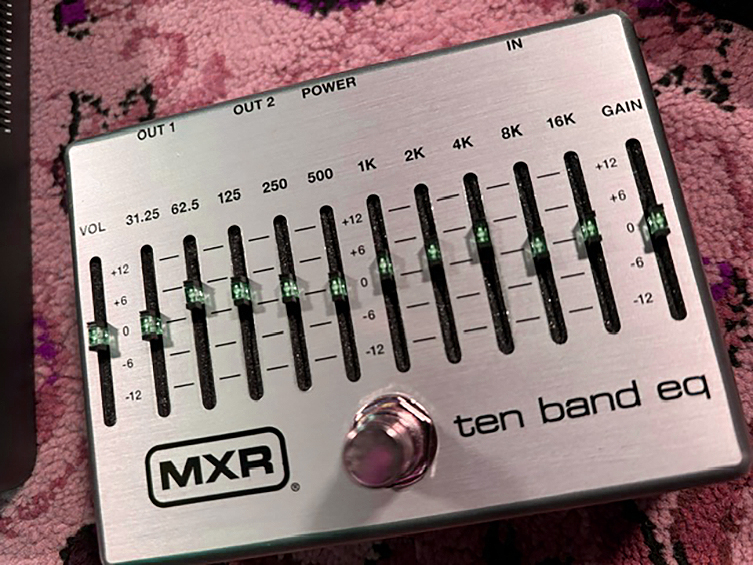
Conversely, cutting low end, low mids and boosting those high end frequencies a tiny bit will stop the Les Paul from both overpowering a Strat and help with the LP’s inherent ‘darkness’ in tone. Some careful EQing will bring these guitars closer together, basically. You want them to sound different but not unbalanced.
Scooped Tones…For Clean Sounds?
- Set your amp EQ for distortion, use EQ pedal to improve clean tone
- Settings work for metal tones too!
If your amp has a shared EQ panel (one set of treble, middle & bass control knobs shared between two or more channels), then I bet use them to dial up the best distorted sound, right? The clean sound is kind of a compromise?
No longer! Scoop out those mid frequencies on your EQ pedal by making the sliders resemble a shallow V. Heavy metal fans know all about this of course (it’s the classic thrash metal tone technique), but that's hardly ever applied to clean tones.
Clean tones often suffer if too much midrange is included - they get boxy and flat sounding, particularly with humbuckers - so dig them out and enjoy a better clean sound.
This means you can leave the EQ off when playing on the gain channel, blasting the mids for your distorted tones, and then utilise the scooped EQ pedal when changing to the clean channel to bring some jangle and shimmer to your sound. That’s all without having to reset the dials on your amp!
And of course, if you use the same scooped settings with your distorted channel, you’ll be straight into Hetfield/Dimebag territory. Double duties! Yay!
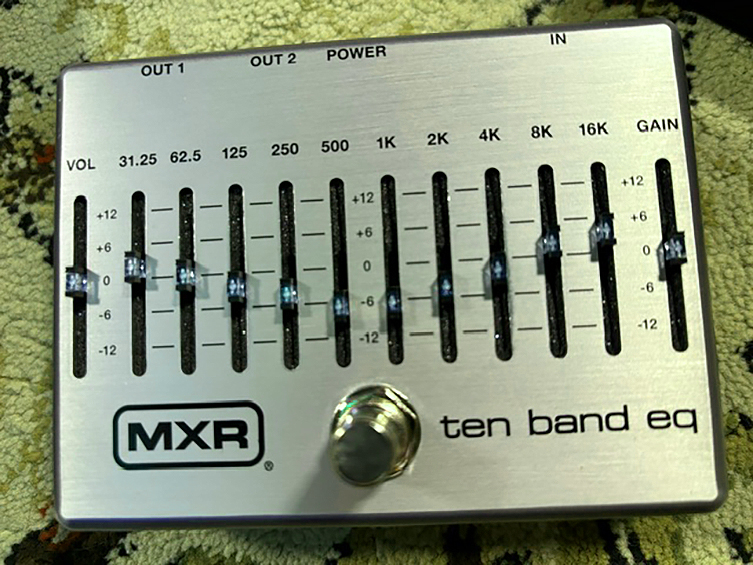
Feedback Buster
- Zero in on problem frequencies
- Dispense with them easily
Feedback is awesome when you want it, when it sounds arty and expressive. Other kinds of feedback are horrible and make you sound like a rank amateur. EQ can really help you get rid of this nasty kind.
This trick works especially well with acoustic guitars but is great for electrics too. So, feedback normally amounts to being a specific frequency that is misbehaving and ‘spiking’, making a howling sound.
Get rid of this by methodically boosting and cutting each frequency slider on your EQ pedal until you find the one that most accentuates that feedback note. This will be the offender! This is the frequency you need rid of in order to stop the feedback. Simply cut that frequency entirely (or at least until the feedback settles) by moving that particular slider down and you should have a good cure for the rest of your gig!
Always On
- EQ acting as a tone stage
- Real-time powerful adjustability
One excellent way to use an EQ pedal is to do this. Simply get your best tone dialled up on your amp, turn on your EQ pedal and use your ears to help you determine where to set the frequency sliders to improve things as much as possible. Amp EQ controls knobs can only get you so far, to be honest.
Once you have your best possible sound dialled in with the help of the EQ pedal…just leave it! If you need to tweak it at the session or gig, just do the same thing: play, listen, adjust. Think about it as an extra layer of production for your guitar, with real time access.
Your Ears Know
Those are some instantly useful ways to improve your sound and your playing, just by working with your tone via an EQ pedal.
You’ll have noticed that I didn’t specify frequency bands apart from those vague terms such as ‘upper mids’ and ‘low end’. There’s a reason for this.
You’ll remember I took you through all of the main frequency groups earlier, right? I’d like you to think more about tone in those terms, rather than getting hung up on whether there’s ‘too much 700Hz coming through’ or whatever. That could well be correct, but if your EQ pedal doesn’t have a slider for 700Hz, then there’s not a whole ton of things you can do to change that! If instead I mention ‘upper mids’, then every EQ will have controls that can exert some influence over that area of your sound.
I prefer the looser terms because they are more inclusive to more players and more pedals. Outside factors will always change your perception of sound (including venue room size, temperature, your physical position etc etc) so adhering to strict numerical values is perhaps less useful than understanding frequencies in a more hands-on and adaptive way. It also makes you better at fixing sound issues in the moment, by simply listening and then reaching down to your EQ pedal and adjusting on the fly.
I hope this guide has been helpful to you! Take these tips, trust your ears and enjoy a better sound in every situation!
Click to Browse All of Our EQ Pedals

